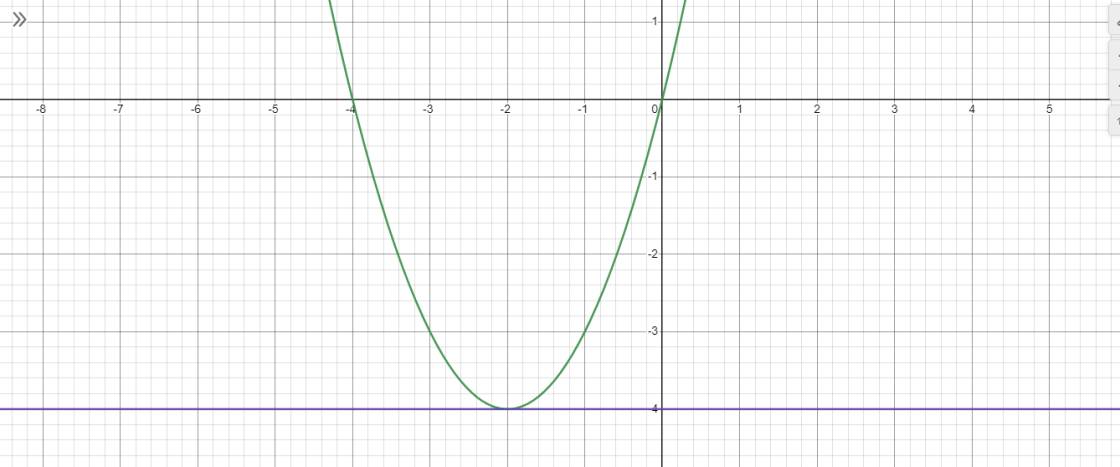chứng minh phương trình
a) \(x^5-5x^3+4x-1=0\) có đúng 5 nghiệm
b) \(4x^3-8x^2+1=0\) có nghiệm thuộc khoảng (-1;2)
Hãy nhập câu hỏi của bạn vào đây, nếu là tài khoản VIP, bạn sẽ được ưu tiên trả lời.

a: Đặt f(x)=x3+x-1
\(f\left(0\right)=0^3+0-1=-1\)
\(f\left(1\right)=1^3+1-1=1\)
Vì \(f\left(0\right)\cdot f\left(1\right)=-1< 0\)
nên f(x)=0 có ít nhất một nghiệm thuộc đoạn (-1;0)
=>Phương trình \(x^3+x-1=0\) có nghiệm
b: Đặt \(A\left(x\right)=4x^4+2x^2-x-3\)
\(A\left(-0,8\right)=4\cdot\left(-0,8\right)^4+2\cdot\left(-0,8\right)^2-\left(-0,8\right)-3=0,7184\)
\(A\left(-0,6\right)=4\cdot\left(-0,6\right)^4+2\cdot\left(-0,6\right)^2-\left(-0,6\right)-3=-1,161\)
\(A\left(0,8\right)=4\cdot0,8^4+2\cdot0,8^2-0,8-3=-0,881\)
\(A\left(1\right)=4\cdot1^4+2\cdot1^2-1-3=2\)
Vì \(A\left(-0,8\right)\cdot A\left(-0,6\right)< 0\)
nên phương trình A(x)=0 có ít nhất 1 nghiệm thuộc đoạn (-1;1)
Vì A(0,8)*A(1)<0
nên phương trình A(x)=0 có ít nhất 1 nghiệm thuộc đoạn (0,8;1)
=>phương trình \(4x^4+2x^2-x-3=0\) có ít nhất 2 nghiệm thuộc đoạn (-1;1)

a: ĐKXĐ: x>=5
\(\sqrt{4x-20}+\sqrt{x-5}-\dfrac{1}{3}\cdot\sqrt{9x-45}=4\)
=>\(2\sqrt{x-5}+\sqrt{x-5}-\dfrac{1}{3}\cdot3\sqrt{x-5}=4\)
=>\(2\sqrt{x-5}=4\)
=>\(\sqrt{x-5}=2\)
=>x-5=4
=>x=9(nhận)
b: ĐKXĐ: x>=1/2
\(\sqrt{2x-1}-\sqrt{8x-4}+5=0\)
=>\(\sqrt{2x-1}-2\sqrt{2x-1}+5=0\)
=>\(5-\sqrt{2x-1}=0\)
=>\(\sqrt{2x-1}=5\)
=>2x-1=25
=>2x=26
=>x=13(nhận)
c: \(\sqrt{x^2-10x+25}=2\)
=>\(\sqrt{\left(x-5\right)^2}=2\)
=>\(\left|x-5\right|=2\)
=>\(\left[{}\begin{matrix}x-5=2\\x-5=-2\end{matrix}\right.\Leftrightarrow\left[{}\begin{matrix}x=7\\x=3\end{matrix}\right.\)
d: \(\sqrt{x^2-14x+49}-5=0\)
=>\(\sqrt{x^2-2\cdot x\cdot7+7^2}=5\)
=>\(\sqrt{\left(x-7\right)^2}=5\)
=>|x-7|=5
=>\(\left[{}\begin{matrix}x-7=5\\x-7=-5\end{matrix}\right.\Leftrightarrow\left[{}\begin{matrix}x=12\\x=2\end{matrix}\right.\)
\(a,\sqrt{4x-20}+\sqrt{x-5}-\dfrac{1}{3}\sqrt{9x-45}=4\left(đkxđ:x\ge5\right)\\ \Leftrightarrow\sqrt{4\left(x-5\right)}+\sqrt{x-5}-\dfrac{1}{3}\sqrt{9\left(x-5\right)}=4\\ \Leftrightarrow2\sqrt{x-5}+\sqrt{x-5}-\sqrt{x-5}=4\\ \Leftrightarrow2\sqrt{x-5}=4\\ \Leftrightarrow\sqrt{x-5}=2\\ \Leftrightarrow x-5=4\\ \Leftrightarrow x=9\left(tm\right)\)
\(b,\sqrt{2x-1}-\sqrt{8x-4}+5=0\left(đkxđ:x\ge\dfrac{1}{2}\right)\\ \Leftrightarrow\sqrt{2x-1}-\sqrt{4\left(2x-1\right)}=-5\\ \Leftrightarrow\sqrt{2x-1}-2\sqrt{2x-1}=-5\\ \Leftrightarrow-\sqrt{2x-1}=-5\\ \Leftrightarrow\sqrt{2x-1}=5\\ \Leftrightarrow2x-1=25\\ \Leftrightarrow2x=26\\ \Leftrightarrow x=13\left(tm\right)\)
\(c,\sqrt{x^2-10x+25}=2\\ \Leftrightarrow\sqrt{\left(x-5\right)^2}=2\\ \Leftrightarrow\left|x-5\right|=2\\ \Leftrightarrow\left[{}\begin{matrix}x-5=2\\x-5=-2\end{matrix}\right.\\ \Leftrightarrow\left[{}\begin{matrix}x=7\\x=3\end{matrix}\right.\)
\(d,\sqrt{x^2-14x+49}-5=0\\ \Leftrightarrow\sqrt{\left(x-7\right)^2}=5\\ \Leftrightarrow\left|x-7\right|=5\\ \Leftrightarrow\left[{}\begin{matrix}x-7=5\\x-7=-5\end{matrix}\right.\\ \Leftrightarrow\left[{}\begin{matrix}x=12\\x=2\end{matrix}\right.\)

Phương trình: 4x−3=∣−5x+8∣ có bao nhiêu nghiệm?
A. Vô nghiệm
B. Có 1 nghiệm
C. Có 2 nghiệm
Hok tốt nhoa

a: \(\Leftrightarrow\left(2m-4\right)^2-4\left(m^2-3\right)>=0\)
\(\Leftrightarrow4m^2-16m+16-4m^2+12>=0\)
=>-16m>=-28
hay m<=7/4
b: \(\Leftrightarrow16m^2-4\left(2m-1\right)\left(2m+3\right)=0\)
\(\Leftrightarrow16m^2-4\left(4m^2+4m-3\right)=0\)
=>4m-3=0
hay m=3/4
c: \(\Leftrightarrow\left(4m-2\right)^2-4\cdot4\cdot m^2< 0\)
=>-16m+4<0
hay m>1/4

a) \(2\chi-3=3\left(\chi+1\right)\)
\(\Leftrightarrow2\chi-3=3\chi+3\)
\(\Leftrightarrow2\chi-3\chi=3+3\)
\(\Leftrightarrow\chi=-6\)
Vậy phương trình có tập nghiệm S= \(\left\{-6\right\}\)
\(3\chi-3=2\left(\chi+1\right)\)
\(\Leftrightarrow3\chi-3=2\chi+2\)
\(\Leftrightarrow3\chi-2\chi=2+3\)
\(\Leftrightarrow\chi=5\)
Vậy phương trình có tập nghiệm S= \(\left\{5\right\}\)
b) \(\left(3\chi+2\right)\left(4\chi-5\right)=0\)
\(\Leftrightarrow\left[{}\begin{matrix}3\chi+2=0\\4\chi-5=0\end{matrix}\right.\)
\(\Leftrightarrow\left[{}\begin{matrix}3\chi=-2\\4\chi=5\end{matrix}\right.\)
\(\Leftrightarrow\left[{}\begin{matrix}\chi=\dfrac{-2}{3}\\\chi=\dfrac{5}{4}\end{matrix}\right.\)
Vậy phương trình có tập nghiệm S= \(\left\{\dfrac{-2}{3};\dfrac{5}{4}\right\}\)
\(\left(3\chi+5\right)\left(4\chi-2\right)=0\)
\(\Leftrightarrow\left[{}\begin{matrix}3\chi+5=0\\4\chi-2=0\end{matrix}\right.\)
\(\Leftrightarrow\left[{}\begin{matrix}3\chi=-5\\4\chi=2\end{matrix}\right.\)
\(\Leftrightarrow\left[{}\begin{matrix}\chi=\dfrac{-5}{3}\\\chi=\dfrac{1}{2}\end{matrix}\right.\)
Vậy phương trình có tập nghiệm S= \(\left\{\dfrac{-5}{3};\dfrac{1}{2}\right\}\)
c) \(\left|\chi-7\right|=2\chi+3\)
Trường hợp 1:
Nếu \(\chi-7\ge0\Leftrightarrow\chi\ge7\)
Khi đó:\(\left|\chi-7\right|=2\chi+3\)
\(\Leftrightarrow\chi-7=2\chi+3\)
\(\Leftrightarrow\chi-2\chi=3+7\)
\(\Leftrightarrow\chi=-10\) (KTMĐK)
Trường hợp 2:
Nếu \(\chi-7\le0\Leftrightarrow\chi\le7\)
Khi đó: \(\left|\chi-7\right|=2\chi+3\)
\(\Leftrightarrow-\chi+7=2\chi+3\)
\(\Leftrightarrow-\chi-2\chi=3-7\)
\(\Leftrightarrow-3\chi=-4\)
\(\Leftrightarrow\chi=\dfrac{4}{3}\)(TMĐK)
Vậy phương trình có tập nghiệm S=\(\left\{\dfrac{4}{3}\right\}\)
\(\left|\chi-4\right|=5-3\chi\)
Trường hợp 1:
Nếu \(\chi-4\ge0\Leftrightarrow\chi\ge4\)
Khi đó: \(\left|\chi-4\right|=5-3\chi\)
\(\Leftrightarrow\chi-4=5-3\chi\)
\(\Leftrightarrow\chi+3\chi=5+4\)
\(\Leftrightarrow4\chi=9\)
\(\Leftrightarrow\chi=\dfrac{9}{4}\)(KTMĐK)
Trường hợp 2: Nếu \(\chi-4\le0\Leftrightarrow\chi\le4\)
Khi đó: \(\left|\chi-4\right|=5-3\chi\)
\(\Leftrightarrow-\chi+4=5-3\chi\)
\(\Leftrightarrow-\chi+3\chi=5-4\)
\(\Leftrightarrow2\chi=1\)
\(\Leftrightarrow\chi=\dfrac{1}{2}\)(TMĐK)
Vậy phương trình có tập nghiệm S=\(\left\{\dfrac{1}{2}\right\}\)

Xét phương trình hoành độ giao điểm\(x^2\)+4x-m=0 <=> x^2+4x=m, đây là kết hợp của 2 hàm số (P):y=\(x^2\)+4x và (d):y=m.
Khi vẽ đồ thị ta thấy parabol đồng biến trên khoảng (-2;+∞)=> Điểm giao giữa parabol và đồ thị y=m là điểm duy nhất thỏa mãn phương trình có duy nhất 1 nghiệm thuộc khoảng (-3;1).Vậy để phương trình có 1 nghiệm duy nhất <=> delta=0 <=>16+4m=0<=>m=-4.
mình trình bày hơi dài mong bạn thông cảm 
a: Đặt \(A\left(x\right)=x^5-5x^3+4x-1\)
Vì A(x) là đa thức bậc 5 nên A(x) có tối đa 5 nghiệm(*)
\(A\left(-2\right)=\left(-2\right)^5-5\cdot\left(-2\right)^3+4\cdot\left(-2\right)-1=-1\)
\(A\left(-1,5\right)=\left(-1,5\right)^5-5\cdot\left(-1,5\right)^3+4\cdot\left(-1,5\right)-1=\dfrac{73}{32}\)
\(A\left(1\right)=1^5-5\cdot1^3+4\cdot1-1=-1\)
Vì \(A\left(-2\right)\cdot A\left(-1,5\right)< 0\)
nên phương trình A(x)=0 có một nghiệm thuộc đoạn (-2;-1,5)(1)
Vì \(A\left(-1,5\right)\cdot A\left(1\right)< 0\)
nên phương trình A(x)=0 có một nghiệm thuộc đoạn (-1,5;1)(2)
\(A\left(0\right)=0^5-5\cdot0^3+4\cdot0-1=-1\)
\(A\left(\dfrac{1}{2}\right)=\left(\dfrac{1}{2}\right)^5-5\cdot\left(\dfrac{1}{2}\right)^3+4\cdot\dfrac{1}{2}-1=\dfrac{13}{32}\)
\(A\left(1\right)=1^5-5\cdot1^3+4\cdot1-1=-1\)
Vì \(A\left(0\right)\cdot A\left(\dfrac{1}{2}\right)< 0\)
nên phương trình A(x)=0 có một nghiệm thuộc đoạn (0;1/2)(3)
Vì A(1/2)*A(1)<0
nên phương trình A(x)=0 có một nghiệm thuộc đoạn (1/2;1)(4)
\(A\left(2\right)=2^5-5\cdot2^3+4\cdot2-1=-1\)
\(A\left(3\right)=3^5-5\cdot3^3+4\cdot3-1=119\)
Vì A(2)*A(3)<0
nên phương trình A(x)=0 có một nghiệm thuộc đoạn (2;3)(5)
Từ (1),(2),(3),(4),(5) suy ra A(x) có ít nhất 5 nghiệm
Kết hợp với cả (*), ta được: A(x) có đúng 5 nghiệm
b: Đặt \(B\left(x\right)=4x^3-8x^2+1\)
\(B\left(-0,5\right)=4\cdot\left(-0,5\right)^3-8\cdot\left(-0,5\right)^2+1=-1,5\)
\(B\left(0\right)=4\cdot0^3-8\cdot0^2+1=1\)
Vì \(B\left(-0,5\right)\cdot B\left(0\right)< 0\)
nên phương trình B(x)=0 có một nghiệm thuộc (-0,5;0)
=>Phương trình \(4x^3-8x^2+1=0\) có nghiệm thuộc (-1;2)